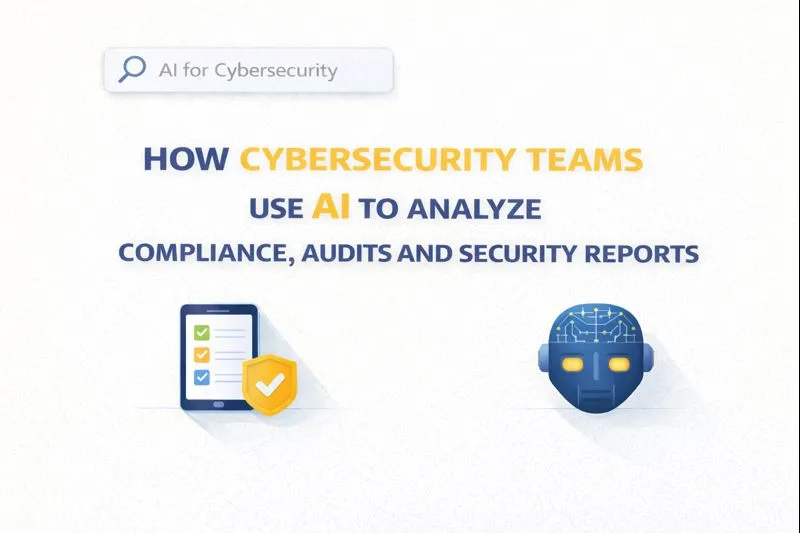Unlocking Growth: Strategies for Rapid Business Expansion
TL;DR
Understanding the Landscape of Rapid Business Expansion
Alright, let's dive into this rapid business expansion thing. You ever wonder how some companies just seem to explode onto the scene? It's not always luck, I can tell you that.
Rapid growth? It's all relative, right? What's warp speed in the snail-paced world of, say, healthcare IT might be just a gentle breeze in e-commerce. For some, it's doubling revenue in a year; for others, it’s snagging a huge chunk of market share. Point is, don't get hung up on comparing yourself to others.
- Industry benchmarks matter. A software startup might aim for 100% year-over-year growth, while a mature retail chain might be thrilled with 5%. (Startup Metrics to Track for Growth and Investors) Know your playing field, and set goals accordingly.
- Realistic targets are key. Chasing unrealistic numbers can lead to burnout and bad decisions. It's better to aim for sustainable growth.
- Sustainability trumps speed. Ramping up too quickly can strain resources and damage customer relationships. Think long-term, not just short-term gains.
Companies that prioritize sustainable growth are 50% more likely to still be in business after five years. (85% of Companies Increased Sustainability Investments Over Past ...)
Digital marketing is practically the fuel injection system for rapid growth these days. You gotta have a solid online presence, or you're basically invisible.
- Data is your compass. Forget gut feelings. Track everything, analyze relentlessly, and adjust your strategy based on what the numbers are telling you.
- Integration is non-negotiable. Your seo, social media, email marketing – it all needs to work together seamlessly. Think of it as a symphony, not a bunch of solo acts.
- Think outside the box! Don't just copy what everyone else is doing. Experiment with new platforms, try unconventional tactics, and be willing to fail.
The Digital Marketing Engine for Rapid Expansion
So, how does digital marketing actually do this rapid expansion thing? It's all about reaching the right people, at the right time, with the right message, and doing it at scale.
- Targeted Reach: Digital platforms allow you to pinpoint your ideal customer with incredible accuracy. Instead of shouting into the void, you're speaking directly to people who are already interested in what you offer. This means less wasted ad spend and higher conversion rates. Think about running ads on social media for a niche product – you can target by interests, demographics, and even behaviors.
- Measurable Impact: Unlike traditional marketing, nearly every digital marketing effort can be tracked. You can see exactly how many people saw your ad, clicked on it, visited your website, and ultimately, made a purchase. This data allows for constant optimization, ensuring your marketing budget is working as hard as possible.
- Scalability: Digital campaigns can be scaled up or down almost instantly. If something is working, you can increase your budget and reach more people. If it's not, you can pull back without losing a ton of money. This flexibility is crucial for rapid growth, allowing you to adapt to market changes on the fly.
- Content Amplification: Digital channels are perfect for distributing valuable content. Whether it's blog posts, videos, or infographics, you can use social media, email, and paid ads to get that content in front of a massive audience, establishing your brand as a thought leader and driving traffic back to your business.
Next up, we'll dive into Growth Hacking for Hyper-Growth.
Growth Hacking for Hyper-Growth
Okay, growth hacking, huh? It's more than just a buzzword; it's about finding those sneaky little ways to seriously boost growth. I mean, who doesn't want hyper-growth?
First thing's first, you gotta figure out where your business is leaking potential customers. Think of it like this: if you don't know where the holes in your bucket are, you can't patch 'em up, right?
Understanding your customer acquisition funnel is crucial. Map out every step, from when someone first hears about you to when they become a loyal customer. Where are people dropping off? Is it a confusing signup process? Maybe your pricing is scaring people away?
Pinpointing key areas for optimization means focusing on the areas that'll give you the biggest bang for your buck. Don't waste time tweaking tiny details if the big picture is broken. For example, if you are in financial services and your landing page for a new investment product has a terrible conversion rate, focus there before worrying about the color of your buttons on your blog.
a/b testing and experimentation is your best friend. Try different headlines, different call-to-actions, different layouts. See what works, and then do more of that. It's all about testing, learning, and iterating - and not being afraid to fail.
The above diagram shows how a customer moves through the funnel, from awareness to retention.
Let's be real, everybody loves something that spreads like wildfire. But going viral isn't just about luck; it's about crafting content that people want to share.
- Creating shareable content means making stuff that's funny, informative, or emotionally resonant. Think about those videos that make you laugh so hard you have to send them to all your friends. Can you create something similar for your brand?
- Leveraging social media trends can give you a huge boost. Jump on relevant hashtags, participate in challenges, and create content that fits the current zeitgeist. But be careful not to force it; nobody likes a brand that's trying too hard.
- Implementing referral programs is a classic tactic, but it still works. Offer incentives for existing customers to refer new ones. Companies like Dropbox built their early growth on this. (5 Powerful Growth Hacks Used by Spotify, Dropbox, and LinkedIn)
Okay, so you've got some growth hacks that are working. Now, how do you scale them without burning out your team? Automation is the answer.
- Automating marketing processes is about using tools to handle repetitive tasks. Think email marketing, social media posting, and lead nurturing. The more you can automate, the more time you'll have to focus on the big picture.
- Using marketing automation tools like HubSpot, Marketo, or Mailchimp can save you a ton of time and effort. These tools let you set up workflows that automatically send emails, post to social media, and even personalize website content based on user behavior.
- Scaling successful growth hacks means figuring out how to replicate your wins. If a particular landing page is converting like crazy, can you create similar pages for other products or services? Don't just sit on your successes; milk 'em for all they're worth.
Next, we’ll explore pSEO – programmatic seo – and how it can drive even more growth.
pSEO and Programmatic SEO: Scaling Content Organically
Ever wonder how some websites seem to have an endless stream of helpful articles? pSEO and programmatic seo might be the answer. It's all about creating a ton of relevant content, automatically, to snag those valuable organic search rankings.
pSEO, or persona-driven SEO, starts with really understanding who you're trying to reach. I mean, you can't just throw content at the wall and hope it sticks, right? You gotta know what your ideal customer is searching for.
- Understanding user intent is about figuring out why someone is searching for something. Are they looking to buy, learn, or just browse? This helps you tailor your content to meet their needs. For example, someone searching "best cybersecurity software for small business" has a different intent than someone searching "what is ransomware?".
- Creating persona-driven content means building content around specific customer profiles. Imagine you're a financial services firm. You might create one persona for a young investor and another for a retiree. Each persona gets content tailored to their specific financial goals and concerns.
- Optimizing for long-tail keywords is where the magic happens. These are longer, more specific search queries that often have lower competition. Instead of just "cybersecurity," think "cybersecurity training for remote employees in healthcare."
Okay, so you know who you're targeting and what they're searching for. Now, how do you create content at scale? That's where programmatic seo comes in. It's about using data and templates to generate lots of pages automatically.
- Using data to generate content at scale involves pulling information from databases and apis to populate content templates. Think of a real estate website that automatically generates pages for every city, neighborhood, and street. Each page pulls in data about local schools, crime rates, and property values.
- Identifying content gaps is crucial. What questions aren't being answered? What topics aren't being covered? Programmatic seo can help you fill those gaps by automatically creating pages that address those unmet needs. For instance, a healthcare company might identify a lack of information about specific medical conditions in certain regions and automatically generate content to address this.
- Implementing programmatic seo strategies might sound daunting, but it doesn't have to be. It's about finding the right tools and processes to automate content creation. For a retail business, this could mean automatically generating product pages with detailed descriptions and specifications pulled from a product database.
Speaking of automation, let's talk about Grackerai. It's like a content creation machine specifically for cybersecurity. I mean, cybersecurity can be a tough nut to crack, right? Grackerai is a software tool designed to streamline content creation for cybersecurity companies.
- Automate cybersecurity marketing with daily news updates: Grackerai keeps your content fresh by automatically pulling in the latest cybersecurity news.
- Create seo-optimized blogs effortlessly: No more staring at a blank screen. Grackerai helps you generate blog posts that are actually optimized for search engines.
- Utilize an ai copilot for content generation. It's like having a little ai assistant that helps you write better content, faster.
- Send automated newsletters to engage your audience. Keep your subscribers in the loop with regular newsletters that are automatically generated and sent.
pSEO and programmatic seo – when you put ‘em together, they’re a seriously powerful combo for scaling content organically. Next up, we’ll dive into how to build a rock-solid content calendar.
B2B SaaS Growth Strategies
Okay, so you've got a killer B2B saas product, but nobody knows about it? Time to fix that. Seriously, though, getting your growth strategy right can be a game-changer.
Choosing between a freemium and a premium model? It's a classic debate. It's not as simple as giving everything away for free or locking it all behind a paywall. You gotta be strategic. I mean, nobody likes a freemium that's so limited it's basically useless.
- Weighing the pros and cons: Freemium can bring in a ton of users, but only a small percentage will convert. Premium offers higher revenue per user, but it's harder to get people to sign up initially. Think about your target audience and what motivates them. A project management tool might offer basic task management for free, while charging for advanced features like gantt charts and team collaboration.
- Optimizing for conversions: Don't just offer a free trial and hope for the best. Nurture those free users with targeted emails, in-app messages, and helpful resources. Show them the value of upgrading. Maybe send them a discount code or offer a free consultation.
- Balancing free value with premium features: The key is to provide enough value in the free version to attract users, but keep the really good stuff for paying customers. A cybersecurity saas might offer free vulnerability scanning for a single website, but charge for multi-site monitoring and threat remediation.
Customer Acquisition Cost (cac) and Lifetime Value (ltv)—these are the numbers that keep ceos up at night. If you're spending more to acquire a customer than they're worth, you're in trouble.
- Calculating cac and ltv: cac is your total marketing spend divided by the number of new customers. ltv is the average revenue a customer generates over their lifetime, minus the cost of serving them. For saas, cac often includes marketing and sales expenses, while ltv considers subscription revenue, churn rate, and average revenue per user (arpu). You really should be tracking all the key metrics, or it is all futile.
- Strategies to reduce cac: Focus on organic growth through seo and content marketing. Optimize your landing pages and signup process. Run targeted ad campaigns and experiment with different channels. Referral programs can work wonders, too.
- Increasing customer lifetime value: Provide excellent customer support and onboarding. Offer new features and integrations to keep customers engaged. Upsell them to higher-tier plans. Build a strong community around your product.
Don't try to do everything yourself. Partnerships and integrations can be a powerful way to expand your reach and acquire new customers.
- Building strategic partnerships: Look for companies that complement your product and target the same audience. a CRM software might partner with a marketing automation platform to offer a bundled solution.
- Integrating with other popular platforms: Make it easy for customers to connect your product with the tools they already use. Integrate with popular project management tools, communication platforms, and payment gateways.
- Expanding reach through collaborations: Co-host webinars, create joint content, and cross-promote each other's products. Partnering with influencers can also be a great way to get your product in front of a wider audience.
So, there you have it – a few key strategies to fuel your B2B saas growth. Next, we’ll get into building a solid content calendar, which is way more important than you think.
Cybersecurity Growth Hacks: Secure Growth
Okay, so cybersecurity and growth... they might seem like oil and water, right? But hear me out, making security a priority can actually be a killer growth strategy. Seriously!
You know how everyone's worried about getting hacked these days? Well, what if you flipped that fear and made security a selling point?
- Highlighting security features in your marketing isn't just about listing them; it's about explaining why they matter to your customers. Like, instead of just saying "we use encryption," explain how that encryption protects their sensitive data from prying eyes. For example, a healthcare provider could emphasize their HIPAA-compliant data handling to attract patients concerned about privacy.
- Building trust is huge. If people believe you're serious about security, they're way more likely to hand over their business. Think about it—would you trust a bank that's been hacked a bunch of times? Nope.
- Demonstrating commitment to data protection can be as simple as a blog post explaining your security practices, or as comprehensive as getting certified. Either way, show, don't just tell.
Certifications can be a massive trust signal, but only if you use them right.
- Obtaining relevant certifications like iso 27001 or soc 2 shows you're playing in the big leagues. These aren't just badges; they mean you've met rigorous security standards.
- Leveraging certifications in sales and marketing: Don't just display certifications; actively use them to win business. Mention them in sales pitches, highlight them in case studies, and use them to differentiate yourself from competitors. For instance, a cybersecurity firm could showcase how achieving SOC 2 compliance helped them land a major enterprise client.
- Communicating security compliance shouldn't be jargon-filled legal speak. Explain what these certifications mean in plain English. For example, a fintech company might say "Our soc 2 certification means your financial data is protected by the same security measures used by top-tier banks."
Stuff happens, right? But how you respond to incidents can make or break you.
- Creating a plan is about more than just writing it down; it's about practicing it. Run simulations, test your response times, and make sure everyone knows their role.
- Regularly testing your incident response plan is crucial. A tabletop exercise can reveal weaknesses you never knew existed. Pretend you’ve been hit with ransomware and see how people react.
- Communicating transparently during a security incident is key to maintaining trust. Don't try to sweep it under the rug. Acknowledge the issue, explain what happened, and outline the steps you're taking to fix it. Transparent communication is vital to maintaining trust during a crisis.
So, there you have it – some ways to turn cybersecurity into a growth engine. Now, let's move on to building a solid content calendar... because even the most secure company needs to tell its story.
Measuring and Iterating: The Continuous Growth Cycle
Alright, so, you've been hustling, using growth hacks, and scaling content. But how do you know if it's actually working? That's where measuring and iterating comes in; it's a never-ending cycle.
- Track the Right KPIs: Don't just look at vanity metrics. Vanity metrics are those that look good but don't actually drive business results, like total website visitors without context. Instead, focus on actionable metrics like conversion rates, customer acquisition cost (cac), and customer lifetime value (ltv). For a retail business, that could mean tracking online sales, in-store visits driven by online ads, and average order value.
- Analyze & Adapt: Data’s useless if you don’t use it, right? Look for patterns, trends, and areas for improvement. Is your new landing page flopping? Tweak the headline and try again. Is a specific marketing channel killing it. Double down!
- Embrace Agile Marketing: Be ready to pivot fast. Agile marketing is about short sprints, constant testing, and continuous improvement. It's like a software update, but for your marketing strategy.
Honestly, it's all about learning what works and ditching what doesn't.








